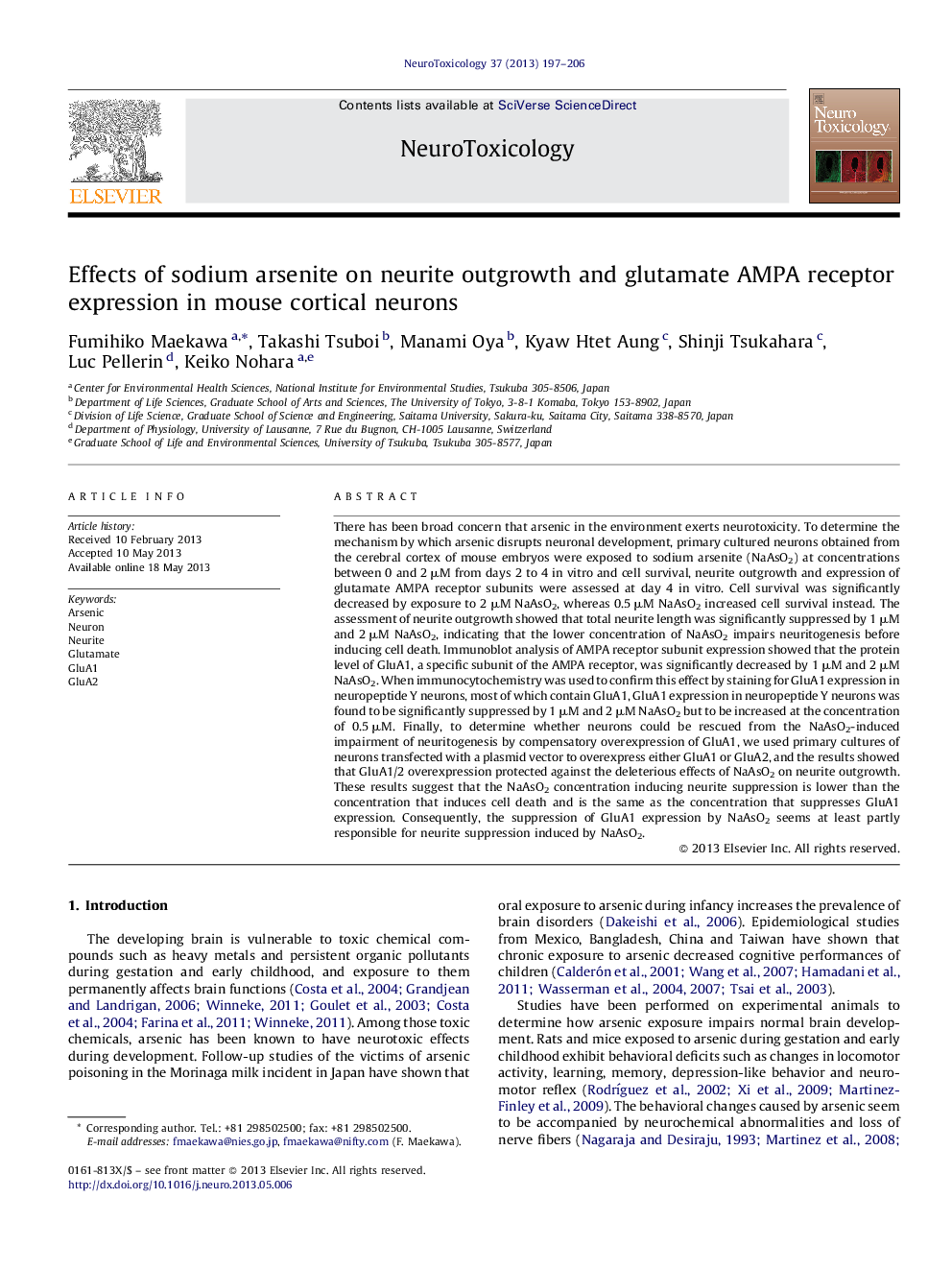| Article ID | Journal | Published Year | Pages | File Type |
|---|---|---|---|---|
| 5855074 | NeuroToxicology | 2013 | 10 Pages |
â¢Neuritogenesis in primary culture of mouse cortical neurons was examined.â¢Neuritogenesis was impaired by exposure to NaAsO2 concentrations of 1 μM or above.â¢NaAsO2 exposure to the same concentrations also decreased GluA1 level.â¢GluA1/2 overexpression blocked the inhibition of neurite elongation by NaAsO2.
There has been broad concern that arsenic in the environment exerts neurotoxicity. To determine the mechanism by which arsenic disrupts neuronal development, primary cultured neurons obtained from the cerebral cortex of mouse embryos were exposed to sodium arsenite (NaAsO2) at concentrations between 0 and 2 μM from days 2 to 4 in vitro and cell survival, neurite outgrowth and expression of glutamate AMPA receptor subunits were assessed at day 4 in vitro. Cell survival was significantly decreased by exposure to 2 μM NaAsO2, whereas 0.5 μM NaAsO2 increased cell survival instead. The assessment of neurite outgrowth showed that total neurite length was significantly suppressed by 1 μM and 2 μM NaAsO2, indicating that the lower concentration of NaAsO2 impairs neuritogenesis before inducing cell death. Immunoblot analysis of AMPA receptor subunit expression showed that the protein level of GluA1, a specific subunit of the AMPA receptor, was significantly decreased by 1 μM and 2 μM NaAsO2. When immunocytochemistry was used to confirm this effect by staining for GluA1 expression in neuropeptide Y neurons, most of which contain GluA1, GluA1 expression in neuropeptide Y neurons was found to be significantly suppressed by 1 μM and 2 μM NaAsO2 but to be increased at the concentration of 0.5 μM. Finally, to determine whether neurons could be rescued from the NaAsO2-induced impairment of neuritogenesis by compensatory overexpression of GluA1, we used primary cultures of neurons transfected with a plasmid vector to overexpress either GluA1 or GluA2, and the results showed that GluA1/2 overexpression protected against the deleterious effects of NaAsO2 on neurite outgrowth. These results suggest that the NaAsO2 concentration inducing neurite suppression is lower than the concentration that induces cell death and is the same as the concentration that suppresses GluA1 expression. Consequently, the suppression of GluA1 expression by NaAsO2 seems at least partly responsible for neurite suppression induced by NaAsO2.
